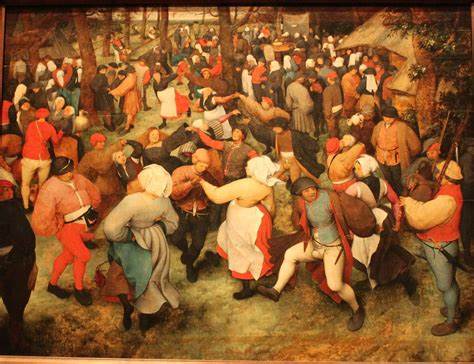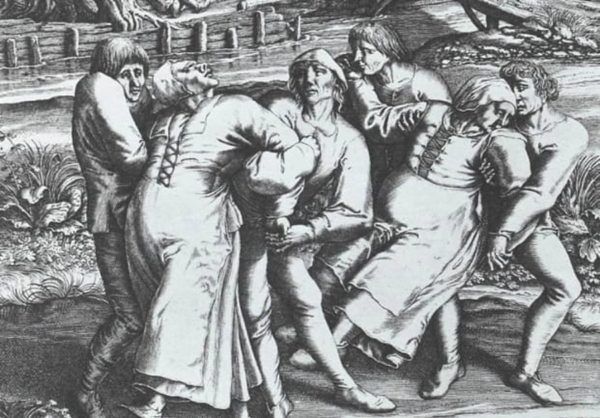Advertisement
The Deadly Dancing Plague Of 1518

In July 1518, in a little town called Strasbourg, Alsace (modern-day France), which lay near the eastern German border, a local woman known as Frau Troffea began to spin, turn, and twirl in the middle of the street. Onlookers questioned the woman who silently continued her physical routine for more than a week.
Without much explanation, several dozen more Strasbourg townspeople readily joined her. Much to the confusion of the masses. In less than a month, this unintelligible dancing frenzy would claim the lives of 400 townspeople turned dancers.
As no logical reasoning could be placed upon this peculiar episode involving hundreds of once ordinary locals, town physicians took the liberty to blame these odd acts on “hot blood.” It was suggested by these unassuming “doctors” that to rid one’s self of this “hot blood” they dance the illness away.
Most likely capitalizing on the phenomenon, the town had eventually erected a stage in the middle of town, even bringing in a live band and full-time dancers to dance among the dazed and confused. The supportive nature of the town’s council was ultimately inappropriate.
Although the diagnosis of hot blood was given, the condition closest related to this event was that of polycythemia vera. In short, P.V. was an unusual and unhealthy gain in total blood cell count, specifically of red blood cells. Due to this increase, the blood in its victims was more thick and viscous. Left untreated, this thickened blood could cause strokes and/or organ/tissue damage.
Another long month would go by before the dancing epidemic of 1518 would relatively conclude. By then, many once-dancing townspeople had succumbed to exhaustion, heart attacks, and strokes. Those that had remained were taken away to nearby mountaintops to have them pray for a kind and merciless recovery. Others were placed into local hospitals, likely held in restraints to avoid further exhaustion of the body.
What would seem like an isolated incident had occurred across Europe in nearby countries including Germany, Switzerland, and Holland, all at roughly the same time. 16th-century records, validated through “physician notes, cathedral sermons, local and regional chronicles, and even notes issued by the Strasbourg city council,” prove this unbelievable sighting had occurred.
Still, for good reason, modern-day historians argue over the authenticity of several details of such development.
Some sources claim that the dancing plague had claimed the lives of 15 people per day. Others argue that contradicting sources note that no official death numbers were ever recorded.
There are also theories, rather attempts, to explain what occurred during the 1518 event. Some believe that there is some truth to the overheated blood, “hot blood,” illness… disregarding “elongated dance and gyration” as the cure, however. Other explanations go so far as to mention demonic possession as the cause of the widespread dance marathon.
John Waller, an American medical historian, proposes that the event was the cause of a mass “stress-induced psychosis.” Capable of spreading rapidly, the elevated psychological stress condition was supported by Strasbourg’s problems with disease, starvation, and the townspeople’s interest in the supernatural.
Another scientific-based theory mentions that ergot fungi, a fungus that typically grows on grains, are capable of producing psychoactive chemicals structurally similar to LSD (lysergic acid diethylamide) caused the long-term, mass dances. Skeptics heavily argue against this thought as LSD would affect all inflicted individuals differently.
Waller mentioned that “this theory does not seem tenable, since it is unlikely that those poisoned by ergot could have danced for days at a time. Nor would so many people have reacted to its psychotropic chemicals in the same way. The ergotism theory also fails to explain why virtually every outbreak occurred somewhere along the Rhine and Moselle rivers, areas linked by water but with quite different climates and crops”.
Will we ever know the historical truth behind such an amusing plague of death? It’s difficult to say. We can state for a fact that this was one killer dance party.












